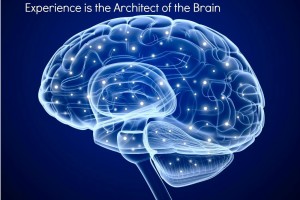Experience is the Key Architect of the Brain in Childhood Apraxia of Speech
I went to my state’s annual school based symposium for SLP’s this weekend and one of the keynote speakers was Dr. Amy Meredith CCC-SLP. She is a professor at Washington State University and specializes in Childhood Apraxia of Speech with a focus on Early Literacy Skills. Of all the things she said, the one quote that really stood out to me was this:
“Experience is the key architect of the brain.”
What does this mean? Well, you could interpret it in different ways I suppose, and put your own twist and connotations on it. For me though, it means this.
The brain is adaptable and can change. For someone with a neurological disorder like apraxia, it means those pathways can be re-written. Oh and haven’t I seen that already with Ashlynn? Occupational Therapy, Physical Therapy, Speech Therapy, and swimming have already been re-wiring her pathways.
An architect is defined as a person who designs and makes buildings. Studies show the brain is literally capable of changing structure!
Dr. Meredith cited a very recent study (Kadi et al., 2014) that found children with idiopathic apraxia (idiopathic meaning of no known origin), had significantly thicker left posterior supramarginal gyri than controls. However, kids treated with a motor based approach to apraxia showed a significant decrease in the cortical thickening area after 8 weeks, and resulted in improved speech as well.
That is amazing people! Therapy literally changed the structure and size of the brain!! We know therapy changes function. That’s why we all spend thousands of dollars on therapy, but to know that it actually changes the structure? To me, that’s really something.
This also tells me to never give up. Not that we would, but now we have research to back us up!
Literacy:
Of particular interest to me was the literacy piece. I know Ashlynn is at risk for learning disabilities. One sobering study she cited was a Raitano et al. (2004) study which examined pre-literacy skills in subgroups of children with speech sound disorders (not CAS specific).
Basically, the results indicate children with SSD’s (speech sound disorder) performed more poorly than the controls, and children with SSD and LI (language impairment) add an additive risk factor for deficits in pre-literacy skills. Lewes et al. (2004) conducted a follow up study and found children with CAS improved articulation but continued to have difficulties with:
syllable sequencing
nonsense word repetition
language abilities
reading and writing
Right. Okay. So, what do we do about this?!? Well
Experience is the Architect of the Brain
Let’s amp up their pre-literacy skills and give them more exposure and experience to things like:
naming letters and letter sounds
categorizing pictures by rhyme or initial sound
identifying things in their environment that start with a certain sound etc
Programs she recommended were Phonic Faces and the Lindamood Bell Program. Dr. Meredith runs “Camp Candoo” over the summer for kids with apraxia focusing on speech sound production and early literacy using Phonic Faces. Her data taken over the past three summers shows significant improvement in all pre-literacy skills after the two week intensive. It was so compelling, I’m seriously going to try and get Ashlynn in this summer. I’m also actually thinking of doing a small group a day with the kids I see in private practice with apraxia and Ashlynn. It would give me experience, and benefit Ashlynn while also benefiting all the other kids. We’ll see. I always have big plans.
